- Rule, Britannia, no more?
- Unpopular Opinions: US Quadball Cup 2023
- Proven Contenders: University of Virginia
- Proven Contenders: Rutgers University
- Proven Contenders: University of Michigan
- Proven Contenders: Creighton University
- Different Perspectives: A Look Inside USA Ultimate
- Antwerp QC, Much of Belgian Core, Leaves Competitive Quidditch
Bottom of the Bracket Invitational Recap
- Updated: February 11, 2013
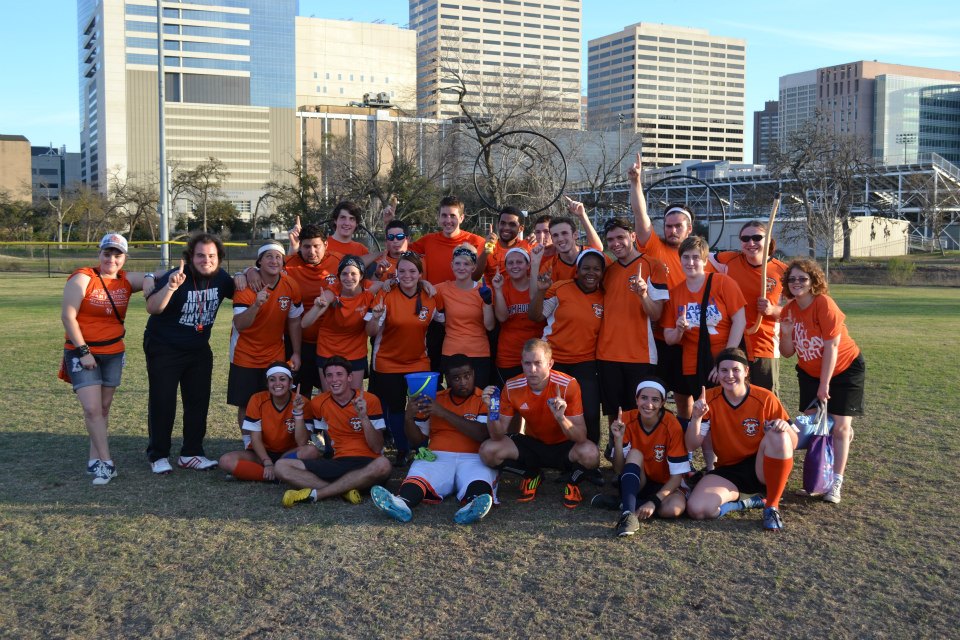
Every region in quidditch currently has a few teams that are considered the top dogs, and they are the ones consistently seen in the finals of every tournament. It is very difficult to be a new or inexperienced team and attempt to compete on the same level as these teams. While it is possible for some teams to step up to that level, it is a rather rare occurrence. Currently, quidditch lacks a true separation of divisions aside from at the World Cup, so nearly every tournament in every region is open to whichever teams want to compete and the main determining factor on whether a team signs up or not is simply cost. There are not readily available D1 or D2 specific tournaments for teams to choose from.
Nick Semon, BOTB tournament director and current Rice Quidditch President, saw the need for a tournament in the Southwest dedicated solely to the newer or more inexperienced teams in the region. “A couple weeks after the Diamond Cup was over, I was talking to some of the other Rice officers and Brandi Cannon of SHSU about how repetitive the finals were in tournaments in the Southwest,” says Semon. “We were jokingly talking about what if we could host a tournament without any of those teams. After thinking about it, we couldn’t think of any reason not to have one.” This idea led to the creation of the first annual Bottom of the Bracket Invitational hosted by Rice Quidditch.
When the event for the tournament was first created on Facebook, players from all the top tier teams in the region that were not invited to compete shifted their focus from competition to volunteering or supporting. Specifically with snitches, there were so many people volunteering that Nick had to actually turn people away by limiting his selection to the first ten people who offered to snitch on the tournament event page. People that weren’t needed as snitches, refs, or any other type of volunteer came out as supporters. Silver Phoenix and Loyola in particular each had their own fan base of players that traveled from Texas A&M and LSU respectively to cheer them on.
So the stage was set and new teams were ready to step into the spotlight on January 26th. Tournament predictions were nearly impossible to make as it really was just about anyone’s tournament for the taking. Throughout the day, there were many close and intense matches that featured some new breakout stars that had previously been overlooked due to stronger attention being placed on the more experienced teams in the Southwest Region.
Rice
One of the older teams in attendance, Rice Quidditch has roughly a year of experience under their belt since their first tournament showing last year in January, also on their home turf. The setting for them was obviously familiar yet different, as they have now come full circle and improved tremendously from being a brand new, completely inexperienced team. They ended pool play 2-1 with their only loss being a close game with Loyola and took the 3rd seed going into bracket play.
Rice’s two biggest strengths were their beaters and speed. Even though they were a comparatively older team at the tournament, a year of experience is not very much time to build up a solid beating strategy, which has proven to be one of the more long-term and lengthy developments for new quidditch teams. However, Rice, and more specifically their veteran beaters led by Kaitlyn Sisk and Mitch Massey, has improved their beater strategy significantly. While their beater chemistry was not quite at the level of Silver Phoenix, they were the only team to come close to rivaling it. They had great positional awareness, maintained bludger control, and quickly regained bludger control whenever it had been lost by exhibiting no fear in tackling opposing beaters. To get to the next level, they just need to hone their skills by improving accuracy and power and bringing their newer beaters up to the level of their veterans.
Size is definitely not on Rice’s side, but they make up for it by being very fast, especially on offensive breakaways which is when most of their goals were scored. However, their ball carriers in these instances need more support. When the opposing defense was set up for a counter attack, they usually came up short and couldn’t score without any assistance. Ideally, if they can do a better job at reading the defense and stalling a run so the rest of their offense can set up and move down the field with them, they will score much more often.
Silver Phoenix
Silver Phoenix is Texas A&M’s second team, which was established last year prior to World Cup V due to an overwhelming amount of Texas A&M quidditch players who wanted to travel to New York and compete. This year the team gained a lot of brand new players who are assimilating quite well with the more experienced players on the team. Silver Phoenix secured the number 1 seed into bracket play after being the only team to finish 3-0 in pool play.
They showcased a very tough defense that was anchored by nearly impenetrable point chasers who were able to stop many offenses at mid field, such as Zach Stevens who proved to be a wall for offenses and caused many turnovers due to his fantastic tackling form. In the cases teams got past the point chasers, the beaters were able to step up and force bad passes or make quick beats to cause turnovers for a fast counterattack. Overall, the team displayed a fantastic chemistry between both beaters on the field as they always worked together and maintained bludger control for the majority of every game. Their offense was most successful when either two chasers or a keeper and a chaser worked closely together to get around defenses by quickly utilizing many accurate give and go passes.
The main area Silver Phoenix struggled was in losing momentum on offense. Their defense came up strong all day, but their offensive chasing game struggled in some very key moments in close games where they got spread too far apart and would then make poor passes or attempt inaccurate long shots. Through constant subbing, while they maintained fresh players on the field, they struggled to keep the momentum up as many hot streaks were lost when those players subbed out prematurely. However, they have quite a number of new players and players that didn’t play last semester who have joined back this semester, so with more opportunities to practice and play together they should be able to build up a better chemistry on offense to avoid these momentum shifts.
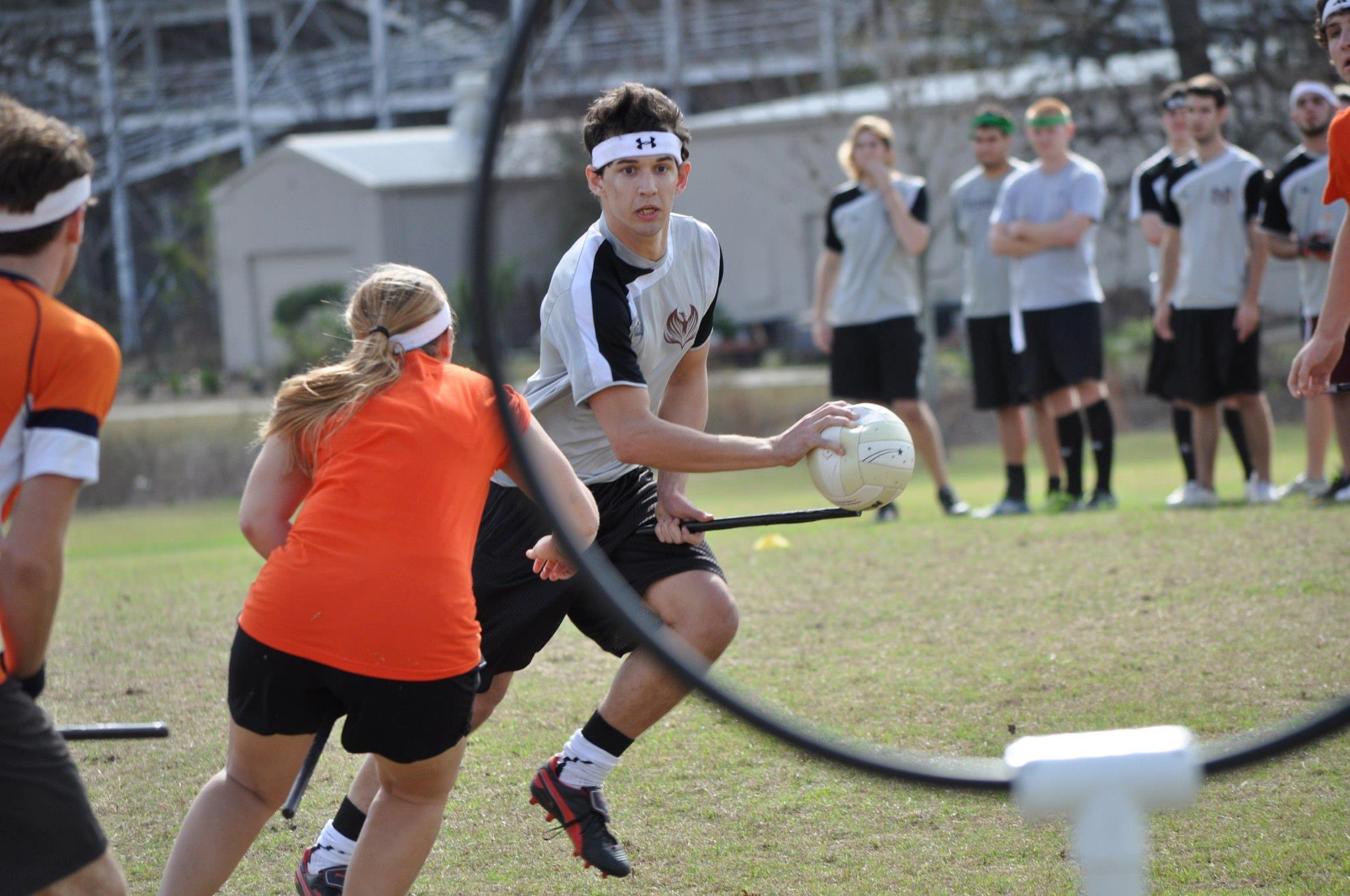
Justin Tepera from the Silver Phoenixes carrying the quaffle up on offense against SHSU. Credit: Paxton Casey
Sam Houston State University
As the most veteran team in attendance, it was not too much of a surprise that SHSU came out on top and took home their first tournament championship victory. SHSU is a difficult team to analyze because their roster composition seems to change from tournament to tournament, but if they can keep their current roster intact, they won’t be a team to overlook during the Southwest Regional Tournament. They had some struggles in pool play, with a close loss to Silver Phoenix and a win by only a snitch grab against UIW which landed them the 4th seed, but they thrived under pressure and stepped up in the semifinals and finals.
SHSU features a chaser and keeper line that has a great mix of speed, agility, and size. This mix made it difficult for teams to defend against SHSU’s offensive attacks because their playing style would change based on who was in at the time. They also showed off a much more evolved passing game, with their offense successfully opening up multiple passing options on every play. This evolution was paramount to their success because they previously relied mainly on counter attacks that often resulted in a score by the original ball carrier or a single pass to a player open behind the opposing team’s goals, but now they are much more focused on setting the pace on offense.
On defense, their beaters were always in the middle of the action, making opposing players extremely frustrated due to nonstop beating. They used a very aggressive defensive beating strategy that showed little hesitation and usually resulted in two to three opposing players running back to their hoops every play. Their chaser defensive strategy is one area that distinctly needs improvement. Some of the newer players seemed unsure of their roles on defense and were slow to drop back after an offensive drive, which resulted in many opposing offenses hovering close to their keeper zone. A strategy session going over defensive roles and organization could quickly rectify this issue as most of the necessary skills are already there: they just need the follow through now. Overall, SHSU showed off their maturity at this tournament as their playing was very strategically sound, and they made a huge statement that no one should write them off as an easy win in any upcoming tournaments.
University of Texas – San Antonio
After making their first big tournament appearance this past fall at the Breakfast Taco tournament, UTSA’s program has certainly grown. With a lineup full of tall athletes, Roadrunner Quidditch used their speed and strength to get to the finals of the tournament. UTSA finished pool play with a 2-1 record, earning them second seed in the bracket. UIW then forfeited, advancing UTSA to the semifinals against Rice. Through an incredibly intense and close game, UTSA showed their grit and their drive to win paid off with a snitch grab for the win. In the finals, their never-stop spirit kept the game with Sam Houston close, often tied, until Sam Houston was finally able to grab the snitch.
UTSA is definitely a rising star in the Southwest and their collection of athletes has a huge amount of potential. The next step for them to make the shift into becoming a truly great team is to work on the more strategic aspects of the game.
Loyola
Coming into the weekend, a few folks, admittedly Louisiana-based, had picked Loyola to win the whole tournament. After losing to Silver in their first pool game, however, it became clear that was not their destiny. Instead, their story of the day was learning how to make adjustments on the fly. Keeper Etefia Umana injured his knee in their first game, which proved to be a huge blow to the team. Instead of panicking, Loyola’s other chasers stepped up their game and their beating improved immensely as the day went on. Loyola won their next two pool games and earned the 5 seed, finally losing in a hard-fought battle to 4 seed Sam Houston in their first round of bracket play.
University of the Incarnate Word
Like UTSA, UIW also made their first appearance at Breakfast Taco. Although their rise has not been nearly as quick as the Roadrunners’, they still showed signs of improvement. Unfortunately, after sustaining too many injuries, they had to forfeit their bracket game to UTSA.
Houston Baptist University
HBU’s Pack Attack debuted at Bottom of the Bracket full of spirit. Although they did not win any games, they came away with valuable tournament experience and should make a good showing in the future.
University of North Texas
Size is not UNT’s strength. However, they do have a decent amount of speed, which certainly helps out their quaffle game. This was UNT’s second major tournament, after the Diamond Cup this past fall. If they can get their beater game up, they should be able to climb up into the next tier of teams soon.
University of South Alabama
South Alabama has had a rather bumpy history, often showing up to tournaments with fewer players than needed for a team and having to combine with merc teams, made easier by their unofficial status. With the closest to a full team they’ve had in quite some time, the Jaguars came into moderate success last Saturday. After losing two pool games to Rice and Loyola (beating only UIW), USA beat newcomers HBU in a play-in game. For their next game, against first seed Silver Phoenix, USA took on players from HBU and what was left of UIW, becoming a megateam that was knocked out of the tournament with a loss.
Bracket Play
The semifinals and finals thoroughly reflected the intensity of all games throughout the day. None of these teams had anything closer than fourth place in previous tournaments under their belts coming in. Each of the semis proved to be close matchups, with strong defenses making scoring difficult. Both games came down to snitch catches, and after some fierce seeker battles, SHSU finally beat Silver 70*-40 and UTSA beat Rice 90*-50. In the finals, SHSU and UTSA traded goals for nearly twenty minutes while the seekers gave everything they could attempting to get the snitch. Finally, SHSU’s Jason Lawrence came in at seeker and was able to snatch the game for the Bearkats, winning 60*-40.
Break Out Stars
Adam Bell (SHSU) – Keeper – He is a star keeper that has unfortunately been overshadowed by keepers on the teams that have previously gotten much more recognition than SHSU due to their success, but he is easily one of the best in this region. He serves as the primary ball carrier for his team and runs the offense by either using his impressive agility to cut and spin towards the goals or by drawing defenders to him to allow his teammates to get open for passes. Adam has proved to be a great leader and has had a big hand in the large improvements SHSU has seen recently. He was easily the MVP of the tournament.
Cullen Carter (UTSA) – Chaser/ Seeker – Cullen is the Drew Wasikowski or Augustine Monroe for Roadrunner Quidditch. He has great fluidity and composure in his runs that would make you think he had been competing for much longer than just this past semester. He also has a strong sense of patience and is very methodical in his movements, clearly always analyzing the play and attempting to remain two steps ahead of his opponents.
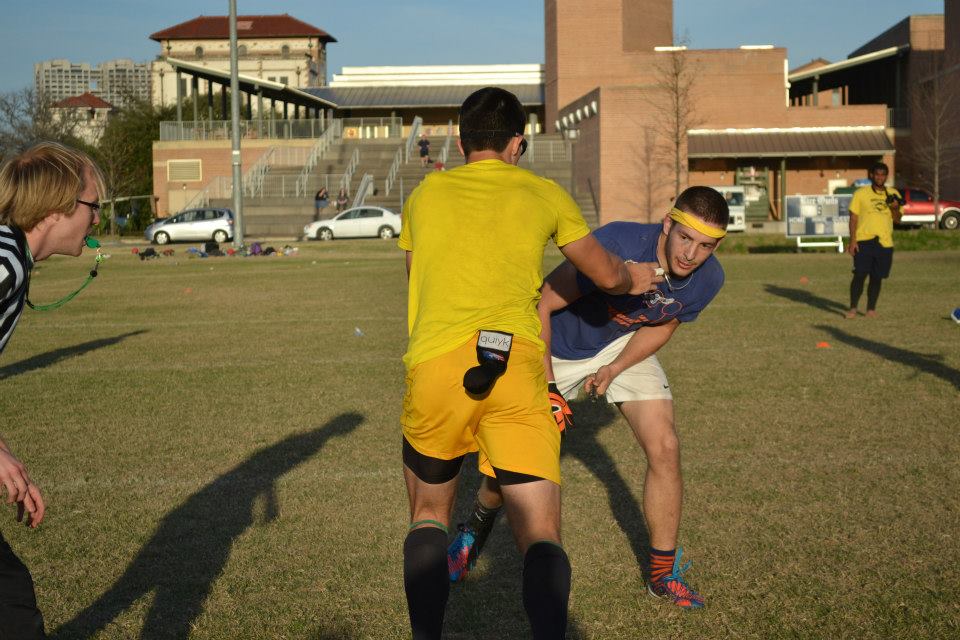
Cullen Carter (UTSA) taking a turn at seeker against snitch Augustine Monroe in the championship match vs SHSU. Credit: Brad Armentor
Steven Gergen (Loyola) – Chaser/ Seeker – Whenever Steven took the field, it was very difficult for any other player to match his speed and passion. Steven utilizes his quick cutting abilities on offense to weave around defenses and dodge bludgers. He also has a very impressive takeover play that he uses to freeze defenses and then rush the goals as they try to figure out who has the quaffle. As seeker he was relentless and never gave the snitch a break. Steven is a very admirable player in that he will never give up on a play.
Kris Johnson (Silver Phoenix) – Chaser – Bottom of the Bracket was Kris’s debut tournament, and she definitely came out to make a name for herself. Kris was not short on jukes and agility, and it was easy to see her taking notes from A&M’s top-notch girl chasers. She fell into a great rhythm during the tournament as she played off of her teammates perfectly always knowing where to run to get open for a pass. Her favorite move was a pump fake, and she sold it beautifully, with every opposing player taking the bait and she would quickly capitalize on the opportunity.
Carlos Elarba (SHSU) – Beater – Carlos, better known as “Sassy” by his teammates, exhibited premier beating skills at the Bottom of the Bracket Invitational where he was the backbone of the SHSU defense. He was always in the middle of the action on defense and showed absolutely no hesitation to beat literally every opposing player he could. Yet, he was not one of those beaters that can be forced to make a hit and then allow the offense an open lane to score as he was exceptionally smart, quick, and accurate.
Overall, the Bottom of the Bracket Invitational proved to be a great innovative idea that succeeded in its purpose. “As a student at a small school, I loved feeling like I was never out of a match; a feeling that I had never experienced before,” says Semon. Nearly all the official games had scores that left teams within snitch range of each other until the snitch was finally caught, which made for some intense and exciting matches. Hopefully, this concept can be carried on across other regions and continued into the future, with more teams hosting these types of tournaments.
Sarah Kneiling contributed reporting to this article.

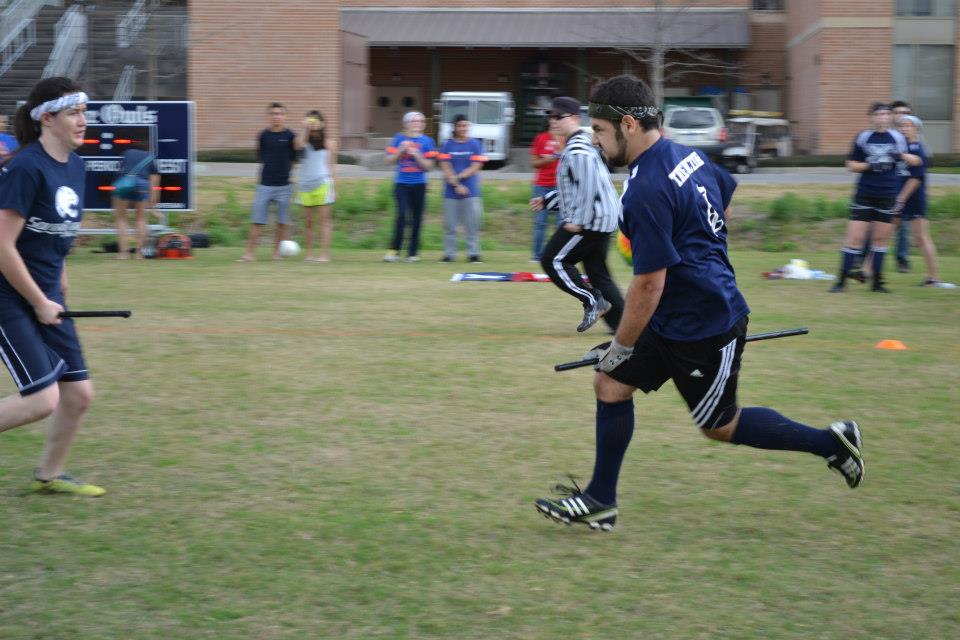
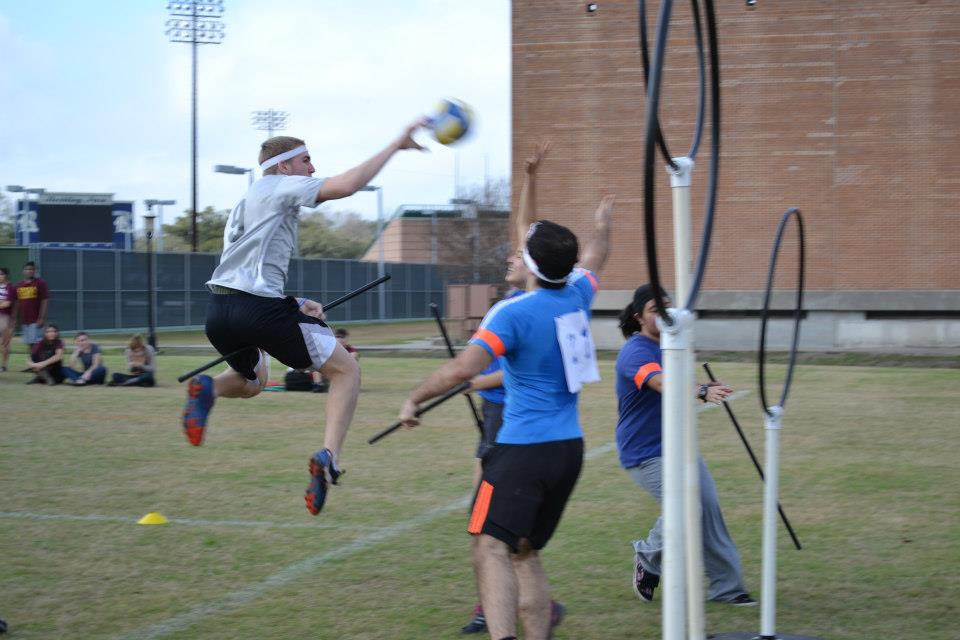
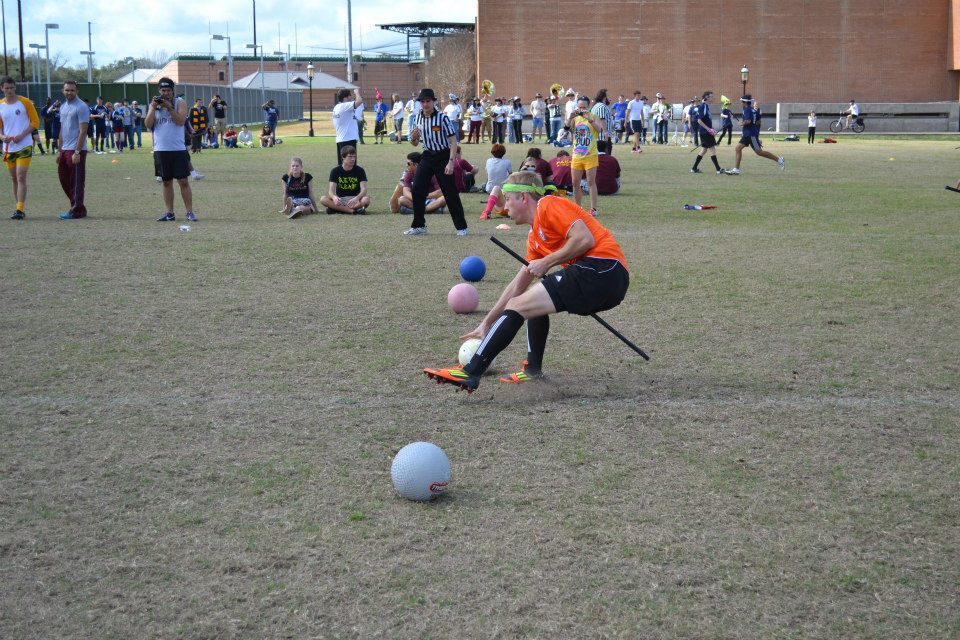
One Comment